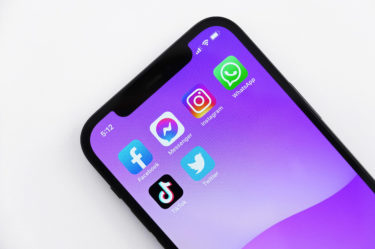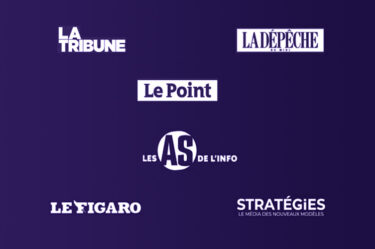How did brands fail to reach Millennials?
The debate as to when Generation Z starts and ends is ongoing, just as with the Millennials, but there is no doubt that the two cohorts are colossally different. We are all familiar with the millennial crowd, also known as Generation Y, born between the early 1980s and mid-1990s, and their stigma of being labeled as “entitled” as well as the first generation to make less income than their parents (Forum). But with the bad comes the good, and despite their lower-than-average incomes, millennials still have over one trillion US dollars in direct purchasing power (Who are Millennials?). As the first generation to have the ability to make regular purchases at a young age came enormous potential for brands to tap into to their buying power. However, many brands missed out on opportunities with this generation by waiting until they were “financially independent” to build meaningful, long-lasting relationships.
On top of it all, they were also put in a box. Many people think of millennials as smartphone wielding, emoji obsessed scooter-riders, but actually, that’s just a small portion of them. As an incredibly diverse generation, this group defies those stereotypes (Who are Millennials?). However, due to brands’ late responses to building relationships with this segment, they missed out on key trust-building opportunities. As a result, one Forbes report showed that only 7% of millennials are brand-loyal. In addition, when brands did aim to target the group, once they became “financially independent,” companies raced to add public welfare campaigns, heavy social media engagement, and efforts to convey “authenticity” as key pillars to their brand strategies (Digiday). However, these tactics have been copied so regularly, millennials can spot when firms are genuine or phoney right away, leading the phoney strategies to have an opposite effect: instead of attracting young consumers, they repelled them from engaging in any relationship, hence the millennials’ overall lack of brand-loyalty.
So, what now?
But all is not lost. Now brands have a second-chance with Generation Z. Born between the mid-1990s and 2012, this cohort is beaming with even more diversity and buying power than the generation before them, but this time, brands need to start now if they want to form long-term relationships (New York Times). This is important not only because they influence the purchases of older generations, but also because they are the future of consumerism. What’s more, the Zs make up almost one-third of the world’s 7.7 billion population, making them the largest generation ever (Bloomberg). Though increasingly difficult in this era where infobesity, or the overload of digital content, run rampant, there are a several ways that brands can engage with this group to influence their future purchasing decisions as they become adults.
Rule no. 1: Authenticate, but actually be authentic about it.
You’ve heard it before: authenticity is key to communicating with this segment. So why do so many brands fail in this area? Ironically, providing a brand mission that feigns genuineness doesn’t cut it, as we learned with the millennials. Gen Z knows that companies are marketing to them, and they are very skeptical towards any that smell fishy or that don’t align with their values (Response Media). Nice packaging and a heartfelt sustainability mission on the brand’s website won’t impress anymore, especially if the brand doesn’t 100% deliver on its promises. With this in mind, brands have to prove that they actually follow their mission by providing transparency and integrity in every aspect of their communication, otherwise, this generation will lose interest.
Tip: Share “behind the scenes” or “day in the life” content. They love to see real world examples of a brand’s values.
Rule no. 2: Make your values known, fast.
With content constantly bombarding them 24/7, Gen Z doesn’t have time to sift through tons of information about your brand. In fact, they have little patience for traditional communication methods, which won’t work on them (AMA). Communication needs to be quick and concise otherwise you’ll lose their attention to other, more eye-popping alternatives. In fact, 30% of these users will disregard content in 5 seconds if it does not provide interesting or valuable information to them (Response Media). This means treating every second of screen time as if it decides whether or not they will engage with your brand… because it does.
Tip: Focus on direct, individualized content that heavily accentuates the benefits they stand to gain from your brand.
Rule no. 3: Don’t label them
This might have been the biggest mistake when branding to millennials who, like Gen Z, want to be treated as individuals (AMA). Don’t label them or lump them together as one group because they are diverse and dynamic. They are more than young tablet-wielders. In fact, they want to have a conversation with brands that speak to them. That means brands need to speak back by utilizing big data to personalize content in addition to engaging in amical, genuine communication. Z wants to get to know your brand, but in return, they want you to get to know them.
Tip: Don’t speak at them, speak with them by integrating directly into the community segment that your brand wants to engage with.
Rule no. 4: Video content all day, everyday
With a plethora of studies telling us that video content is Generation Z’s preferred mode of receiving information, you’ve probably realized that video content needs to become key to your brand’s strategy. For example, one study shows that this group consumes 71% of their content by streaming video (The Drum). However, what you might not take into consideration is how you use the content. Some marketers accrue video content to disperse over a multitude of platforms, but that simply doesn’t work. Content made for your website won’t necessarily translate directly to Instagram. One study conducted by Response Media found that on Instagram, Z shows who they want to be; on Snapchat, they share who they are; on Twitter, they accrue the news; and on Facebook, they garner information. Therefore, video and photo content should be custom created for each platform, otherwise your message won’t get across effectively, and you’ll lose the sale.
Tip: Use more images and videos to connect, and add text only to compliment the message.
Think ahead
As the largest generation yet, this group makes up your future consumers and even makes up a part of your current sales by influencing the purchasing decisions of older generations. Therefore, your brand stands to gain a lot by at least establishing basic communication to foster a long term relationship, which is where brands fell short in establishing connections with millennials. Luckily, we can learn from the past and harness the passion and energy of Gen Zers to accomplish a larger goal. They want to improve the world around them by engaging with brands that offer relevant, concise and meaningful content, and your brand can provide that simply by paying a little bit of attention.
To be continued…
While Generation Z is so the new Generation Y, be aware that the next generation, Gen Alpha, has already begun with its first members born in 2013. But more to come on that later…






